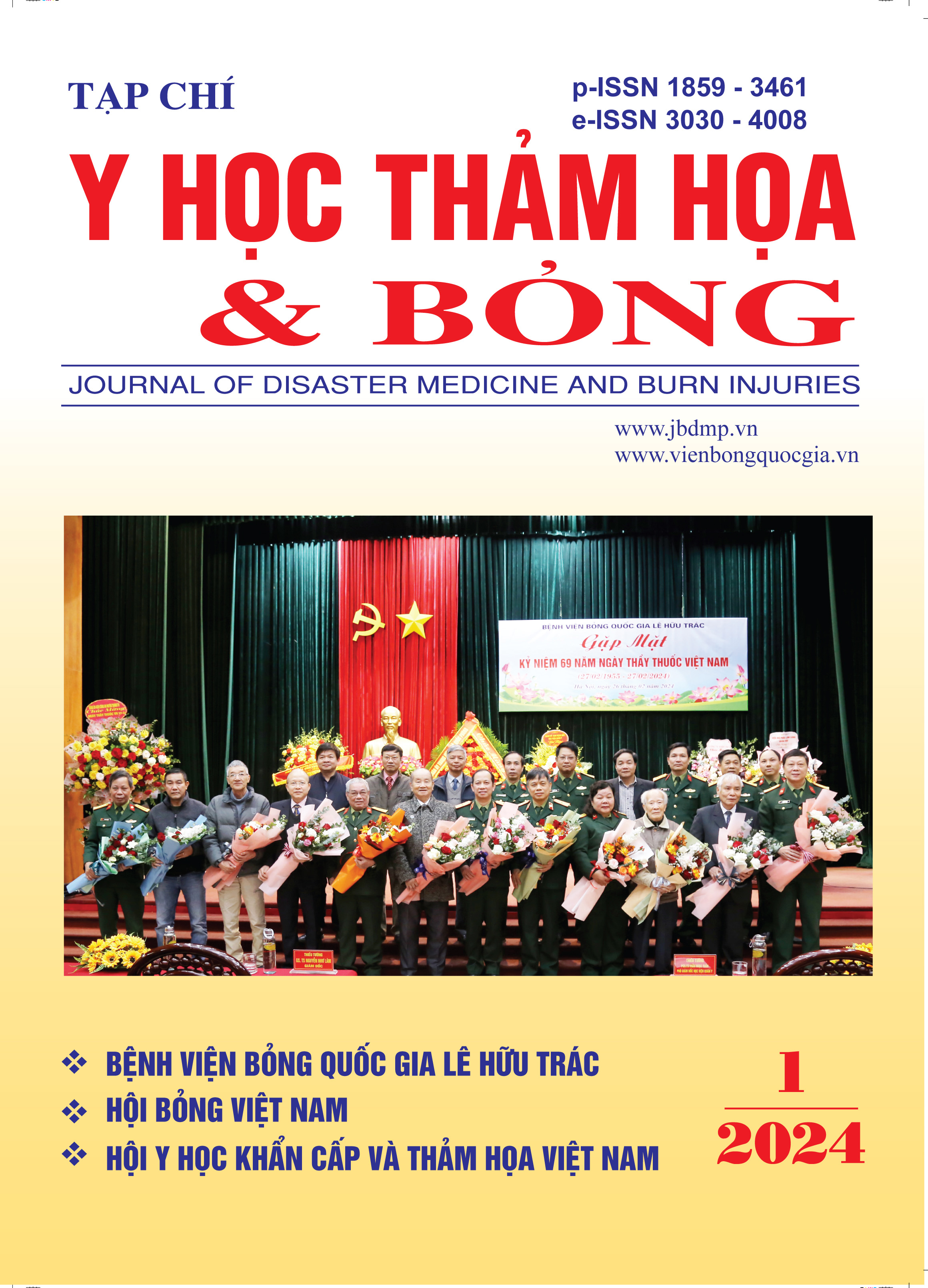Evaluation of the treatment effectiveness of biovb membrane on children's superficial thermal burns in the Orthopedic Department, Vietnam National Children's Hospital
Main Article Content
Abstract
Objectives: To evaluate the effectiveness of BIOVB MEMBRANE for superficial burns caused by thermal in children.
Subjects and methods: Prospective study, longitudinal follow-up at Burn Unit - Orthopedic Department, National Children's Hospital from June 2023 to July 2023.
Thirty pediatric thermal burn patients were hospitalized within 24 hours after the burn. The burn wounds are treated with BIOVB MEMBRANE, monitoring and evaluating the effectiveness of treatment based on local clinical symptoms. Data were processed using STATA 16.0 software
Results: BIOVB MEMBRANE adhered well to the wound bed, the time for second-degree burns to heal was 5.6 ± 0.7 days, and for third-degree burns to heal was 9.1 ± 1.8 days. The mean number of dressing changes was 4.2 ± 1.2 times with an average number of treatment days of 8.7 ± 2.1 days. The first dressing change had a FLACC pain score of 5.6
Conclusion: BIOVB MEMBRANE is an effective treatment for superficial burns in children caused by thermal.
Article Details
Keywords
Biosynthetic membrane, superficial burns, children
References
2. Mathias, E., & Srinivas Murthy, M. (2017). Pediatric thermal burns and treatment: a review of progress and future prospects. Medicines, 4(4), 91.
3. Jordan, K. C., Di Gennaro, J. L., von Saint André-von Arnim, A., & Stewart, B. T. (2022). Global trends in pediatric burn injuries and care capacity from the World Health Organization Global Burn Registry. Frontiers in pediatrics, 10.
4. Resch, A., Staud, C., & Radtke, C. (2021). Nanocellulose‐based wound dressing for conservative wound management in children with second‐degree burns. International Wound Journal, 18(4), 478-486.
5. Luca-Pozner, V., Nischwitz, S. P., Conti, E., Lipa, G., Ghezal, S., Luze, H., ... & Qassemyar, Q. (2022). The use of a novel burn dressing out of bacterial nanocellulose compared to the French standard of care in paediatric 2nd degree burns - A retrospective analysis. Burns, 48(6), 1472-1480.
6. Pan, X., Han, C., Chen, G., & Fan, Y. (2022). Evaluation of Bacterial Cellulose Dressing versus Vaseline Gauze in Partial Thickness Burn Wounds and Skin Graft Donor Sites: A Two-Center Randomized Controlled Clinical Study. Evidence-Based Complementary and Alternative Medicine, 2022.
7. Lund, C. C. (1944). The estimation of areas of burns. Surg Gynecol Obste, 79, 352-358.
8. Bairagi, A., Tyack, Z., Kimble, R., Vagenas, D., McPhail, S. M., & Griffin, B. (2023). A Pilot Randomised Controlled Trial Evaluating a Regenerative Epithelial Suspension for Medium-Size Partial-Thickness Burns in Children: The BRACS Trial. European Burn Journal, 4(1), 121-141.
9. Schiefer, J. L., Aretz, G. F., Fuchs, P. C., Bagheri, M., Funk, M., Schulz, A., & Daniels, M. (2022). Comparison of wound healing and patient comfort in partial‐thickness burn wounds treated with SUPRATHEL and epictehydro wound dressings. International Wound Journal, 19(4), 782-790.


